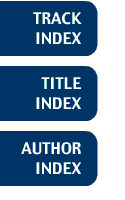
Track: Forestry
A Tool To Estimate Sediment Production and Delivery from Roads

Wayne L. WoldKathy Vanderwal Dube
The construction and use of roads in a forested basin can be a significant source of sediment. Road construction removes vegetation from the road cut slope, fill slope, ditch, and tread, leaving these areas susceptible to erosion. Over time, the cut slope and fill slope revegetate and erosion from these areas is reduced; however, the road tread and ditch continue to be sediment sources as long as the road is in use. There are a number of spreadsheet models developed that estimate the amount of sediment produced from these road areas. While many of them are good at giving an estimate of the amount of sediment, they simply do not predict where the sediment input areas are located. Fieldwork must be conducted to determine the location of sediment inputs to a watercourse. The road sediment model discussed here determines not only where these sediment inputs are likely, but also the amount of sediment generated from the associated road length. Currently, the road sediment model can operate without many known attributes for the roads, such as surface type, to give a relative amount of sediment (high, medium, low) and thus narrow down areas that need site visits. The more road attributes that are known, the more accurate the model; in six watersheds of about 500 square miles total, the model can be very useful for conducting the soil erosion portion of watershed analysis to set up a road maintenance plan. With the current emphasis on addressing the "legacy road" issues in Washington and Oregon, this tool would prove to be valuable.
Wayne L. Wold
Boise Cascade Corporation
P.O. Box 51
Yakima, WA 98907
USA
Telephone: 509-457-7232
Fax: 509-457-7233
E-mail: wayne_wold@bc.com